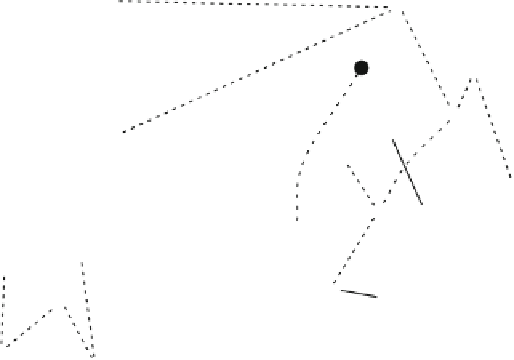Information Technology Reference
In-Depth Information
12
Group A
9
Group B
1
10
3
8
2
11
7
Michael
13
6
Robert
4
5
Group C
Fig. 9.4 A picture of a network of relationships. The people are the represented by the nodes,
and the relationships by the links between nodes (based on data from Burt
2004
, Fig. 1,
simplified)
but different, topics should know about each other's work, but do not, then a
structural hole is said to exist. Management works hard to avoid such a lack of
connections, but there are often more holes than management can know about and
fill. (Informal connections, family connections, and company sports teams are
ways that such holes are sometimes filled). Figure
9.4
shows a structural hole
between groups A and C—there is no direct connection between the two groups.
Burt's results showed the importance of social networks in work settings.
Managers that were better connected (had less network constraints on having
people to talk with) had greater compensation, better evaluations, more promo-
tions, and better ideas as judged by their peers. Some of these results are shown in
Fig.
9.5
, which shows that being better connected (lower network constraints) led
to higher salaries and better ratings of ideas by a neutral party. Overall, being
better connected led to better performance in this type of job.
This work makes several suggestions. It shows the utility of social network
analyses. It suggests that good workers will attempt to be well connected, and that
managers should attempt to fill in the gaps between groups.
9.2.6 Summary
This section has laid out several ways to organize social behavior, several
frameworks
for
organizing
the
information
in
this
chapter
and
from
later
































































Search WWH ::

Custom Search